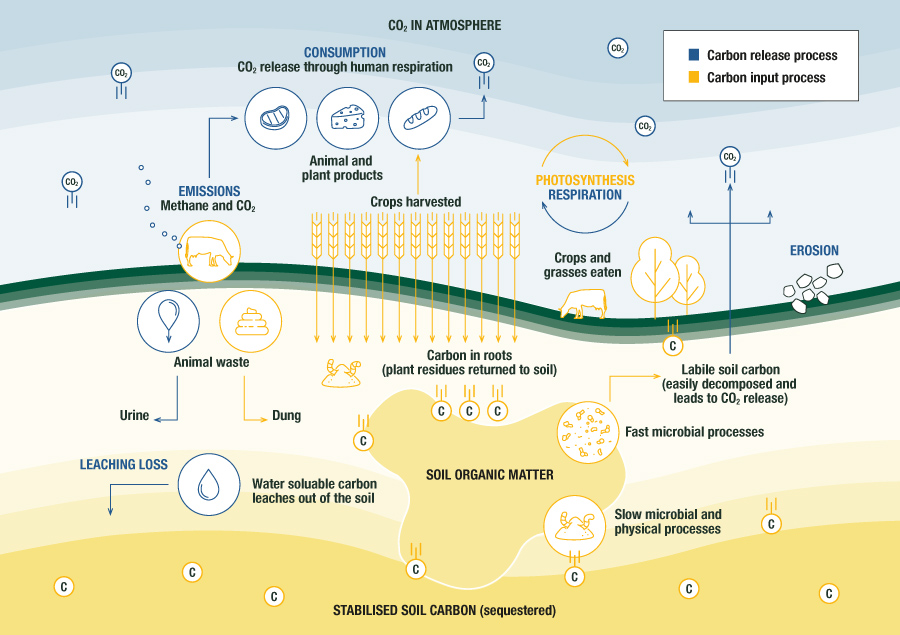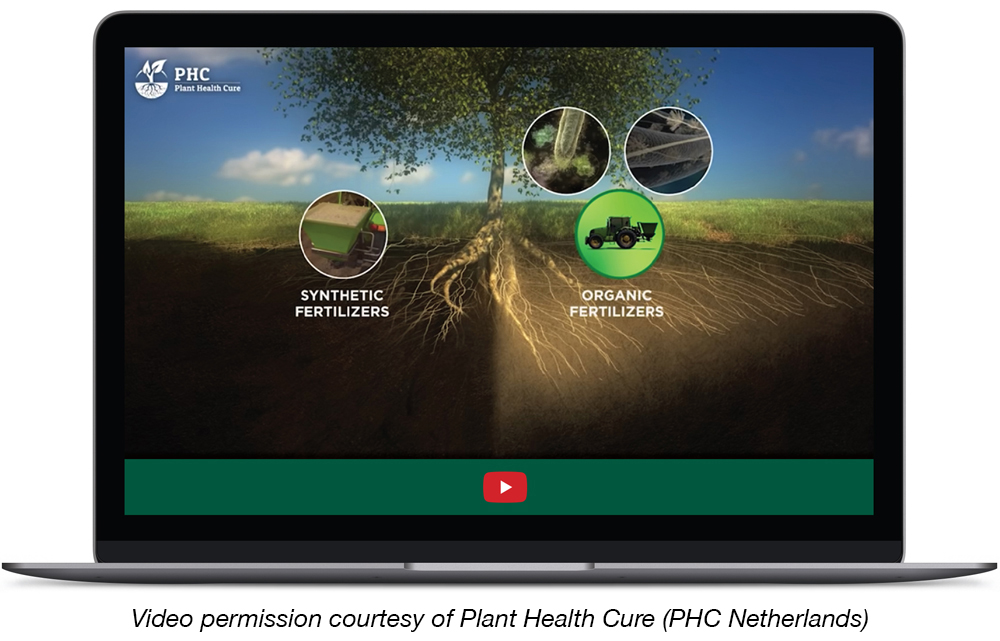Building Soil Carbon
Soil is a living thing – it is a complete and self-sustaining ecosystem, alive with living organisms such as worms, fungi, insects, bacteria, and organic matter.
Watch this video to see how harmonious soil biology works.
Carbon is the main element present in soil organic matter (SOM) and is referred to as organic carbon. Organic carbon influences many soil characteristics including, colour, nutrient and water holding capacity, nutrient cycling and availability, improved water infiltration and aeration. It is a vital component of productive agriculture.
Soil carbon is an important indicator of healthy soil, influencing a range of factors that impact yield and quality. It is present as organic or inorganic carbon.
Increasing SOM also has another positive influence on the environment as it sequesters carbon (captures and stores atmospheric carbon dioxide carbon) in soils. It is estimated that SOM stores four times as much carbon as living plants and that carbon stored in all the world’s soils is two to three times the amount in the atmosphere.
When carbon sequestration becomes a focus, usually because of government policies and programs offering incentives, it is known as ‘carbon farming’ which focuses on adopting land management practices that increase the amount of carbon stored in soils.
BioAg’s focus is purely on working with farmers to improve their soil health for the long term, for improved pasture and crop yield and quality. Better soils. Better crops. Better stock.
Contact us if you’d like to build your soil carbon naturally.
Understand more about Soil Carbon – eLearn
Agriculture Victoria has developed a soil carbon eLearning module. It is a useful resource providing a great introduction for those seeking a better understanding of soil carbon, its role and function in agriculture.
How the Soil Carbon Sequestration Cycle works
Carbon naturally enters and leaves the soil through a range of complex processes occurring simultaneously. The amount of carbon stored in soils can be increased or decreased by changing and adapting land management practices.

Soil Carbon resources
Carbon is the main element present in soil organic matter, on average making up 58% by weight. The carbon present in soil organic matter is referred to as organic carbon. Soil organic carbon is a vital component of productive agriculture. In addition sequestration of ca... Routine soil tests across two decades have helped guide and provide a clear picture for BioAg’s customer in their transition from a chemical fertiliser program to a balanced biological approach to fertility. A review of the long-term changes in the soil has shown severa... Sometimes nutrient shortage is not the issue. What happens when there is too much nutrient? How do we know if plants are accessing and using the nutrients that have been applied? Are nutrients in the soil being utilised by the plant or are they being lost to the environ... It is well known that soil microbes interact with plants to supply nutrients, in particular nitrogen, typically supplied through synthetic inputs such as fertiliser. In natural ecosystems, most nutrients including nitrogen (N) are bound in organic molecules which have l... There is no doubt that high yielding crops, pastures and permanent plantings all require nitrogen (N). It is a major component of both chlorophyll, required for photosynthesis, and of amino acids, the building blocks of proteins. Colin Falls is a fourth-generation farmer with a property that has been in his family for 104 years. Since making the move to BioAg programs some years ago, the improvement in soil health his farm experienced meant they were able to increase the quality of their product... Woodside Marketing is a family-owned national enterprise based in Griffith NSW. Its experience in farming fruit and vegetables spans three generations of the Vardanega family commencing with the arrival to Australia in 1912 of Girolamo Vardanega from Treviso Italy. Gran... SOM (soil organic matter) plays a significant role in the carbon cycle. More carbon is stored in soils than in all plants, animals and the atmosphere combined. It is estimated that SOM stores four times as much carbon as living plants and that carbon stored in all the w... For the past four years, BioAg Agronomist and Area Manager Pete Emerson has been conducting a large-scale biostimulants demonstration with a grower near Brocklesby, southern NSW. The innovative grower is keen to explore ways to combat soil constraints and improve crop y...

